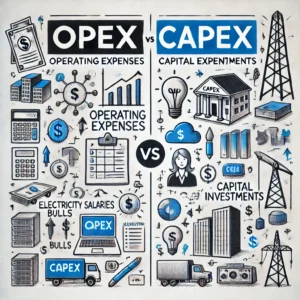
In a media interview this week, the Treasurer attempted to defend the government’s simultaneous pursuit of a $1+ billion stadium while cutting nearly 3,000 public sector positions. His defence rests on a distinction between operational and capital expenditure, and a moral argument about intergenerational equity.
These are serious economic principles that deserve serious consideration. But when examined closely, they expose rather than excuse the fundamental contradiction at the heart of this government’s fiscal management.
When pressed on the political difficulty of prosecuting a billion-dollar stadium alongside massive job cuts, the Treasurer made three key points:
First, the operational vs capital distinction: “You have to keep in mind that one is operational, and the other is capital. And if you deny the stadium to fund public servants that will last 3-4 years then what are you going to do after that?”
Second, the infrastructure prioritisation principle: He cited the Bridgewater Bridge, 80 percent funded by the Australian government and stadium, 80 percent funded by the State, as investments “that will last for generations to come.”
Third, the moral test: “I ask myself in general terms can you look down the barrel of a TV camera and say to your fellow Tasmanians, is this an expenditure so worthy that you are willing to make the next generation pay for it?”
On this final point, the Treasurer concluded: “If you are talking about operational expenditure so that we can have a better lifestyle today at the expense of the next generation that is where it is not only an economic argument but also a moral argument and I think it’s unfair to the next generation.”
To consider the economic principles, and to be very clear, there IS a legitimate economic basis for prioritising infrastructure investment even during fiscal consolidation.
Quality infrastructure generates future economic activity and tax revenue. Roads, bridges, ports and utilities enable private sector productivity worth multiples of the initial investment. Infrastructure that genuinely serves future generations for decades can justifiably be debt-financed because those future taxpayers benefit from using it.
The Treasurer is also correct that you can’t fund ongoing operational costs simply by not building infrastructure. When public sector salaries still need paying next year, foregone infrastructure doesn’t provide revenue.
These are economically sound principles. The Bridgewater Bridge is a perfect example of infrastructure that meets these tests: critical infrastructure enabling freight and commuter movement, serving genuine intergenerational purpose, with economic returns that justify the investment.
There is sound economic rationale for the prioritisation of infrastructure. But here’s the problem and need for a reality check – every one of these principles requires the infrastructure to generate positive returns and these critical conditions must be met:
- Positive returns: Benefit Cost Ratio (BCR) > 1.0 or positive Net Present Value (NPV)
- Strategic necessity: Addresses genuine economic or social need
- Fiscal capacity: Debt burden must be sustainable within fiscal strategy
- Optimal timing: Project shouldn’t crowd out better alternatives or strain capacity
The proposed stadium has a BCR of approximately 0.5, well below 1. This means it returns only 50 cents in benefits for every dollar of taxpayer money invested.
This is not infrastructure investment in any economically meaningful sense. It is value destruction financed by debt.
The Treasurer also says you can’t fund operational costs by not building capital infrastructure. But Tasmania is already borrowing $1.4 billion to fund operational costs, that’s the underlying deficit in this budget. Every dollar we borrow for a stadium with a benefit-cost ratio of 0.5 makes that operational deficit harder to close, because it adds tens of millions in annual debt servicing costs, which ARE operational expenses, to a budget that’s already drowning in operational debt.
What the Treasurer is effectively arguing is that we need to cut 3,000 jobs to close the operational deficit, but we can still build the stadium because that’s capital.
We then must consider the Treasurer’s moral test – “is this an expenditure so worthy that you are willing to make the next generation pay for it?”. This is precisely the right question to ask. The Treasurer’s response provides the framework to question his position. By his own standard, it would appear he would be unable to justify the stadium to future generations. They will pay debt servicing for decades while receiving an asset worth half what was spent.
A BCR of 0.5 means:
- No productivity or growth multipliers, that is, it consumes value rather than creating it
- No intergenerational equity – future taxpayers bear costs exceeding benefits
- No fiscal sustainability – it worsens rather than supports long-term fiscal position
This leads to the government’s own investment standards.
The November 2025-26 Budget includes Fiscal Strategy 9, which sets this target that requires: 100% of Government owned businesses infrastructure projects exceeding $50 million must have a positive BCR.
To be clear – this means the government requires every single major government owned business infrastructure project to have positive returns. This is sound policy and it ensures public enterprises invest taxpayer money productively.
But the stadium, with its BCR of 0.5, fails this test catastrophically.
The question is unavoidable: If the government holds its own businesses to this standard, why doesn’t it apply to Macquarie Point Development Corporation and other discretionary government infrastructure spending? Why doesn’t it apply to the stadium?
There is no defensible answer. It reveals either intellectual inconsistency – we have standards but don’t apply them to pet projects – or an admission that the stadium fails the government’s own investment criteria but proceeds anyway.
The Treasurer’s separation of operational and capital expenditure also obscures a crucial reality: the stadium creates ongoing operational burdens.
The $1+ billion debt requires servicing. Interest payments are operational expenditure that will constrain future budgets for decades. The facility itself almost certainly require ongoing operational subsidies, as entertainment venues typically do.
So while the Treasurer asks “what will you do next year when you don’t have another stadium not to build,” the real question is: what will you do for the next thirty years when debt servicing on the stadium consumes budget capacity that could support productive services?
The Treasurer insists that the timing related to proceeding with the stadium “has never entered my mind” in terms of political timing. Yet the sequence of events with budget difficulties being managed around stadium approval and a budget that does nothing this year to address the fiscal cliff we stand at, suggests otherwise.
Furthermore, the Treasurer’s operational vs capital distinction relies on an assumption that doesn’t exist. The assumption that Tasmania has a balanced operational budget and is only borrowing for capital investment.
The truth is that Tasmania is borrowing for everything, including operational costs, as evidenced by the $1.4 billion underlying deficit.
In this context:
- Every dollar of additional borrowing worsens the overall fiscal position
- Debt servicing costs are operational expenses that compound the problem
- The “what will you do next year” question has a damning answer: pay interest on bad debt
The Treasurer’s moral test asks whether infrastructure is worthy enough to burden the next generation when it returns 50 cents on the dollar, we’re cutting 3,000 jobs because operational costs are supposedly unsustainable and the government demands positive returns from every business it owns, but exempts its political priorities from the same scrutiny.
The distinction between operational and capital expenditure is economically sound. More fundamentally, this debate isn’t about operational versus capital expenditure because this proposal violates that principle already. It’s about whether basic investment discipline applies to all government spending, or only when politically convenient.
The Treasurer can’t have it both ways: demanding fiscal discipline from government businesses while exempting pet projects, or claiming intergenerational equity matters while saddling future Tasmanians with debt for an asset worth half its cost. That’s not sound economics. It’s just expensive hypocrisy.
The Treasurer’s interview responses actually undermined the budgetary and economic case for the stadium more persuasively than most opponents have been able to do. Maybe that was the point. Without getting offside with stadium supporters, he has sent a coded message loud and clear that the stadium doesn’t stack up and he needs help to fix the budget problem he has inherited.

